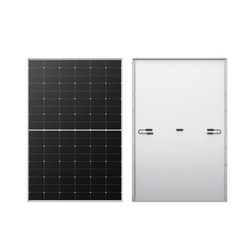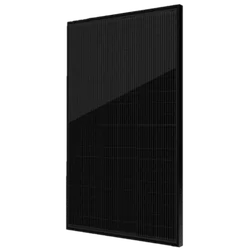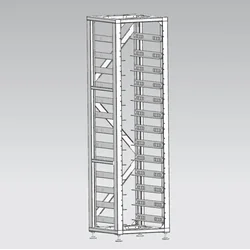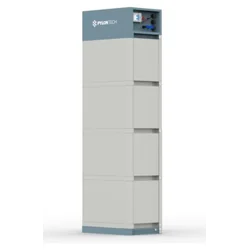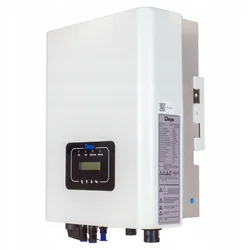Hydrogen as a key player in the EU's renewable energy mix
Hydrogen as a key player in the EU's renewable energy mix
In the global quest for cleaner, more sustainable energy sources, one element is emerging as a potential game-changer: hydrogen. This abundant element, often overlooked in the past, is now being recognized for its versatility and sustainability. As the world grapples with the urgent need to transition to cleaner energy sources, hydrogen is emerging as a versatile and sustainable energy carrier. This article delves into the potential of hydrogen as a key player in the European Union's renewable energy mix, and its pivotal role in the EU's renewable energy strategy.
Soojuspump 10kW BLAUPUNKT BLP10P3V1M monoblokk

JA Solar JAM54D40 450/LB Mono Bifacial High Perfomance Must raam
The sustainability of hydrogen
The sustainability of hydrogen
Hydrogen is not only versatile, but also sustainable. When produced from renewable resources, hydrogen is a zero-emission fuel. When used in fuel cells, it produces only water and heat, no greenhouse gases. This makes hydrogen a key tool for achieving the EU's ambitious climate goals.
Moreover, hydrogen can help to decarbonize sectors that are hard to electrify, such as heavy industry and long-haul transport. These sectors are currently major contributors to greenhouse gas emissions, and finding sustainable energy solutions for them is a significant challenge. By replacing fossil fuels in these sectors, hydrogen can significantly reduce the EU's carbon footprint.

VARIO katusekonks fotogalvaanikale kahekordse reguleerimisega 140mm paks 1.4016

Äärikuga DIN roostevabast terasest mutter 6923 M10 A2 304
Sungrow SG10RT (3P, 2MPPT, Wifi) inverter

JinkoSolar fotogalvaaniline moodul JKM575N-72HL4-BDV 575W Hõbe

DIN-kantmutter 557 M8 roostevabast terasest klambrite/profiilide jaoks A2 AISI304 võtmeava
The versatility of hydrogen
The versatility of hydrogen
Hydrogen, the most abundant element in the universe, has been largely overlooked as a potential energy source. However, its versatility is now being recognized. Hydrogen can be produced from a variety of resources, including natural gas, nuclear power, biomass, and renewable power like solar and wind. This flexibility in production methods allows for a wide range of applications, making hydrogen a promising solution for integrating the EU's diverse renewable energy sources.
Moreover, hydrogen can be stored in large quantities for long periods, making it an excellent option for energy storage. This is particularly important for renewable energy sources like wind and solar, which are intermittent and require effective storage solutions. Furthermore, hydrogen can be used as a fuel for power and heat, a raw material for industrial processes, and a fuel for vehicles. This wide range of applications further underscores the versatility of hydrogen as an energy carrier.

Tigo TS4-A-O võimsuse optimeerija (maksimaalse võimsusega moodulite jaoks 700 W)1500V
Päikese serv SE33.3K-RW00IBNM4

Spetsiaalne Bi-Metal M6x25 isekeermestav kruvi trapetsikujuliste sildade jaoks

GROWATT võrguväline inverter SPF 6000ES PLUS, 48VDC MPPT 100A, WiFi

Fotogalvaaniline moodul PV paneel 435Wp Longi Solar LR5-54HTH-435M Hi-MO 6 Explorer must raam Must raam
Hydrogen in the EU's renewable energy strategy
Hydrogen in the EU's renewable energy strategy
The EU has recognized the potential of hydrogen and has made it a central part of its renewable energy strategy. The EU's Hydrogen Strategy, launched in 2020, aims to scale up the production and use of clean hydrogen across the EU. The strategy includes measures to stimulate demand for hydrogen, to build a hydrogen infrastructure, and to invest in research and innovation.
By 2030, the EU aims to have installed at least 40 gigawatts of renewable hydrogen electrolysers and to produce up to ten million tonnes of renewable hydrogen. This ambitious strategy reflects the EU's commitment to making hydrogen a key player in its renewable energy mix.
In conclusion, hydrogen has the potential to play a pivotal role in the EU's renewable energy strategy. Its versatility and sustainability make it a promising solution for integrating the EU's diverse renewable energy sources, for storing and transporting energy, and for decarbonizing hard-to-electrify sectors. With its Hydrogen Strategy, the EU is taking bold steps to unlock this potential and to make hydrogen a key player in its renewable energy revolution. The future of hydrogen as a key player in the EU's renewable energy mix is bright, and its potential is only just beginning to be tapped.

JA Solar JAM54D41 445/LB 445W Suure tõhususega mono bifacial täismust (konteiner)
Hymoni soojuspump RSV-15AS/C 15KW monoblokk

Kahe keermega kruvi M10x200 sarikatele KAHEKEEMEGA 10*200 komplektis mutrite ja EPDM-iga

Jinko Tiger Neo N-tüüpi JKM445N-54HL4R-V (445 W, must raam)
The potential of hydrogen
The potential of hydrogen
The potential of hydrogen as a renewable energy source is vast. It can be used in a wide range of applications, from powering cars and heating homes to providing energy for industrial processes. Moreover, hydrogen can be produced from a variety of sources, including water, natural gas, and biomass, making it a versatile and flexible energy carrier.
One of the key advantages of hydrogen is that it can be stored and transported easily. This makes it an ideal solution for integrating renewable energy sources, which are often intermittent and geographically dispersed. By storing excess energy produced by wind and solar power in the form of hydrogen, we can ensure a steady supply of renewable energy, even when the sun is not shining or the wind is not blowing.
Furthermore, hydrogen can help to decarbonize sectors that are difficult to electrify, such as heavy industry and long-haul transport. These sectors are currently major contributors to greenhouse gas emissions, and finding sustainable energy solutions for them is a significant challenge. By replacing fossil fuels in these sectors, hydrogen can significantly reduce the EU's carbon footprint.
The challenges of hydrogen
The challenges of hydrogen
While the potential of hydrogen is vast, there are also significant challenges to overcome. One of the main challenges is the cost of producing hydrogen from renewable sources. Currently, the most common method of producing hydrogen is through the steam reforming of natural gas, which is a process that emits large amounts of carbon dioxide. Producing hydrogen from renewable sources, such as water electrolysis powered by wind or solar energy, is currently more expensive and less efficient.
Another challenge is the lack of infrastructure for transporting and storing hydrogen. While hydrogen can be transported in pipelines, the existing natural gas infrastructure cannot be used without modifications, as hydrogen can cause embrittlement in many of the materials used in natural gas pipelines.
Despite these challenges, the EU is committed to making hydrogen a key part of its renewable energy strategy. With the right policies and investments, hydrogen could play a pivotal role in the EU's transition to a sustainable energy future.
Hydrogen deposits in European Union Countries
Hydrogen deposits in European Union Countries
While hydrogen itself is not found naturally in a pure form that can be directly used as an energy source, the resources required to produce hydrogen are abundant in many European Union countries. For instance, the North Sea region, which includes EU countries like Denmark, Germany, and the United Kingdom, has significant wind resources that can be harnessed to produce hydrogen through electrolysis. Similarly, Southern European countries like Spain and Italy have high solar potential, which can also be used for hydrogen production.
Moreover, several EU countries have substantial biomass resources, which can be converted into hydrogen through processes like gasification and pyrolysis. Countries like Finland and Sweden, with their large forestry industries, are particularly well-positioned in this regard.
In terms of geological storage, some EU countries have suitable underground formations where large quantities of hydrogen can be stored. These include depleted gas fields, salt caverns, and aquifers. The Netherlands, with its extensive natural gas infrastructure, is one of the countries leading the way in exploring the potential for large-scale hydrogen storage.
In conclusion, while the EU does not have "hydrogen deposits" in the traditional sense, it has abundant resources that can be used to produce and store hydrogen. These resources, combined with the EU's commitment to renewable energy, make the bloc a potential leader in the global hydrogen economy.

























